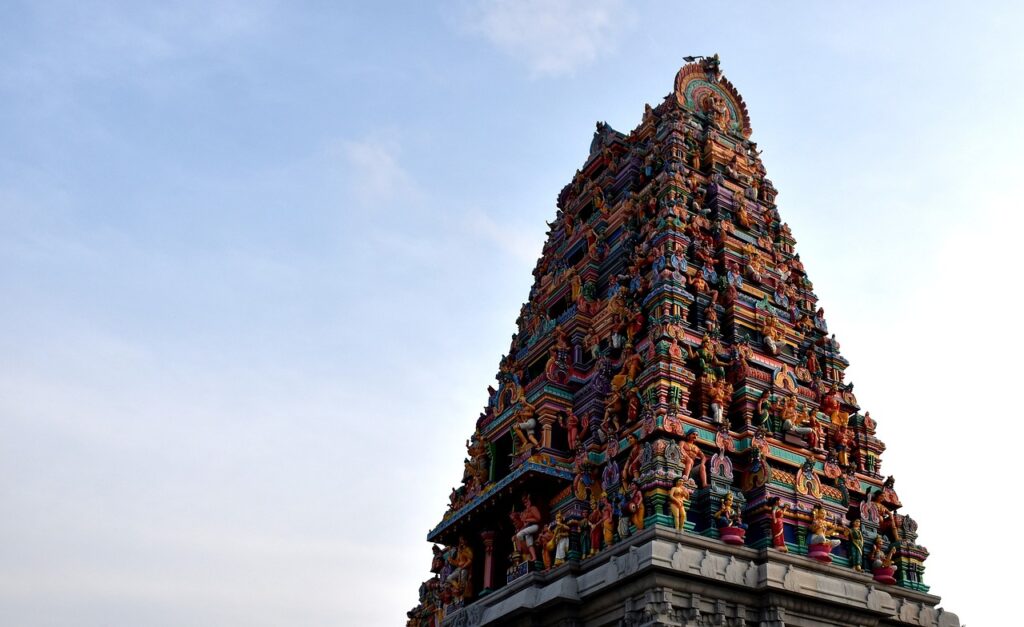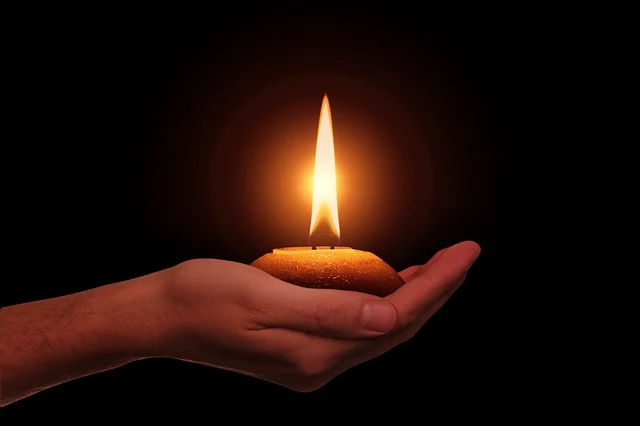Community which follows Hinduism is mainly belonging to India. Hindu community found in other countries is the people who migrated from India for the finding economic opportunities. There are very few countries in the world whose native people follow Hinduism. But in the African continent the condition is different.
People in Africa are following Hinduism and the population of Hindu is increasing day by day there. People of Africa have fascination of Hindu culture.
In the African country Kenya Rathyatra of god Jaggannath used to call. In the Mauritius, god Vishnu’s statue’s construction is in process. In the Ghana country load Ganesh Chaturthi is being celebrated. Many countries of Africa celebrates festival of Hinduism.
As per July 2022 2.5 million people are following Hinduism in Africa. Hindu community people are 4 times in Africa than Europe.
Hinduism is the 3rd largest religion of the world, around 1.2 Billion people follows Hinduism. It is the oldest religion. Downfall of Hinduism has been seen in the past due to Muslim king invaders and Christine missionary. They spread their religion fast among the people. As a result more than 26 countries accepted the national religion as an Islam and more than 13 countries accepted national religion as a Christine.

Origins of Hinduism:
Hinduism didn’t start as a structured religion but evolved as a way of life, encompassing various beliefs and practices.
Core Beliefs:
At its core, Hinduism emphasizes principles like dharma (righteousness), karma (actions and their consequences), and moksha (liberation from the cycle of birth and death). It encourages a holistic approach to life, focusing on ethical living and spiritual growth.
Development of Sects:
As Hinduism evolved, different sects emerged, each with its unique focus and set of beliefs. The major sects include:
Shaivism:
Deity: Followers of Shaivism primarily worship Lord Shiva.
Characteristics: Shiva is seen as the supreme deity, embodying destruction and regeneration. Devotees engage in practices like meditation and ritual worship.
Shaktism:
Deity: Shaktism centers around the worship of the divine feminine, often personified as Goddess Shakti or Devi.
Characteristics: Devotees believe in the active, creative force of the feminine aspect of the divine. Rituals and ceremonies celebrate the power of the goddess.
Vaishnavism:
Deity: Vaishnavites primarily worship Lord Vishnu and his incarnations, such as Rama and Krishna.
Characteristics: Devotees focus on devotion (bhakti) to Vishnu and seek spiritual growth through prayers, rituals, and ethical living.
Diverse Practices and Gods:
Hinduism accommodates a vast array of practices and gods. People may choose deities based on personal preference, family tradition, or regional influences. The pantheon includes gods like Brahma (the creator), Vishnu (the preserver), Shiva (the destroyer), Lakshmi (goddess of wealth), and Saraswati (goddess of knowledge).
Rituals and Worship:
Hindu worship involves various rituals, ceremonies, and festivals. Temples serve as places of communal worship, while individuals may have personal shrines at home. Rituals often include offerings, prayers, and meditation.
Cycles of Life:
Hinduism incorporates the concept of samsara, the cycle of birth, death, and rebirth. The goal is to break free from this cycle through spiritual realization and attain moksha.

The historical links between Hinduism and Africa are complex and varied. While Hinduism is traditionally associated with the Indian subcontinent, historical trade, cultural exchanges, and migrations have contributed to the presence of Hinduism in certain parts of Africa. Here are some key points highlighting the historical connections between Hinduism and Africa:
- Ancient Trade Routes: Trade routes between the Indian subcontinent and Africa date back to ancient times. Indian merchants and sailors were known to have established connections with East African coastal regions, facilitating cultural and religious exchanges.
- Swahili Coast: The Swahili Coast, along the eastern shores of Africa, was a significant region for trade and cultural interaction. Indian Ocean trade routes connected the Swahili Coast with the Indian subcontinent, leading to the influence of Indian culture, including aspects of Hinduism, in the coastal areas.
- Island of Mauritius: The island of Mauritius in the Indian Ocean has a significant population of people of Indian origin, many of whom practice Hinduism. The migration of indentured laborers from India to Mauritius during the 19th and early 20th centuries brought Hindu customs, traditions, and the religion itself to the island.
- Hindu Diaspora in Africa: In more recent times, especially during the colonial era, Indian communities migrated to various parts of Africa. These migrations often brought Hindu practices with them. Countries like South Africa, Kenya, Tanzania, and Uganda have Hindu communities that have maintained their religious and cultural traditions.
- Cultural Influence: Hinduism has also left its mark on certain African cultures, particularly in areas where there were historical interactions. This influence is often visible in local customs, rituals, and even linguistic elements.
- Temples and Cultural Centers: In some African countries, particularly those with a significant Indian diaspora, you may find Hindu temples and cultural centers. These serve as focal points for religious and cultural activities within the Hindu community.
It’s important to note that while there have been historical connections, the presence of Hinduism in Africa is not uniform, and its influence varies across regions. The interactions between Hinduism and African cultures have been shaped by a combination of trade, migration, and cultural exchanges over centuries.
Certainly! Let’s delve into the details of Hinduism in Africa, focusing on the Swahili Coast, Indian migration, and the present-day presence of Hinduism in certain African countries.
Centuries ago, Indian traders established a significant presence on the Swahili Coast, encompassing present-day Kenya, Tanzania, and Mozambique. Drawn by lucrative trade routes, they brought Hinduism with them, constructing temples for worship and fostering cultural exchanges with local communities.
During the 19th century, the British Empire facilitated the migration of Indian laborers to Africa. This diaspora introduced Indian and Hindu culture to the continent. These migrants played a crucial role in shaping the religious and cultural landscape of Africa.
The Hindu diaspora in Africa, stemming from historical migrations, became key custodians of Hinduism on the continent. They established temples and cultural centers, serving as focal points for religious practices and preserving their cultural heritage.
Prominent Countries with Hindu Communities:
South Africa:
Presently, South Africa is a powerful hub for the Hindu community, with approximately 1.5 million Hindu residents.
Mauritius – “Little India”:
Mauritius boasts a significant Hindu population, constituting over 50% of the total. With around 1.3 million Hindus, Mauritius is often referred to as “Little India.” The country has even seen Hindu presidents, underlining the community’s influence.
Uganda:
Hinduism has found a substantial following in Uganda, with a significant Hindu population contributing to the cultural diversity of the country.
Ongoing Influence and Cultural Significance:
The Hindu diaspora’s efforts have resulted in the continuity and vibrancy of Hinduism in these African nations. Temples, cultural practices, and festivals contribute not only to the religious fabric but also to the broader cultural mosaic of the region.
In summary, the historical links between Hinduism and Africa, particularly on the Swahili Coast, coupled with later migrations, have fostered a rich tapestry of Hindu culture in countries like South Africa, Mauritius, and Uganda, where the Hindu community continues to thrive and make valuable contributions to the diverse African heritage.
- How ideology shapes society?
- The Story of Razia Sultana- the first female ruler of the Delhi Sultanate
- Why is America a Superpower?
- Huge Massacre in Bangladesh
- The problem of unemployment in India
